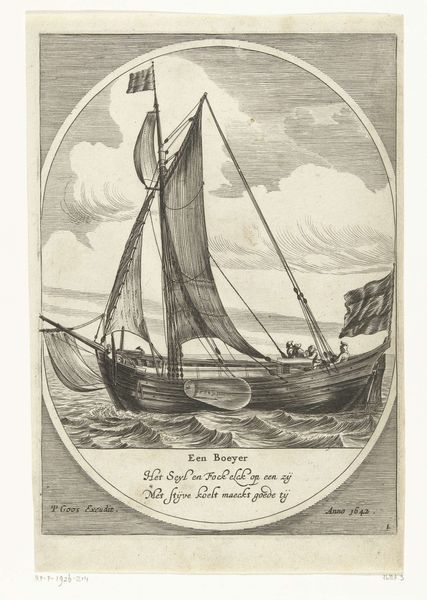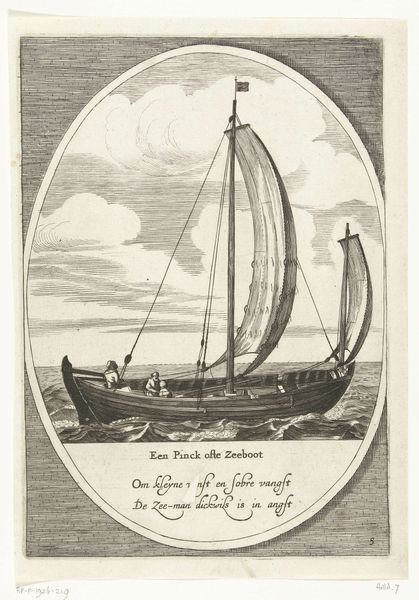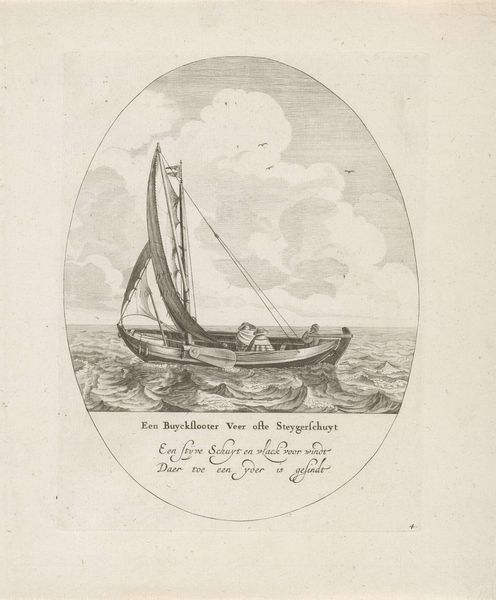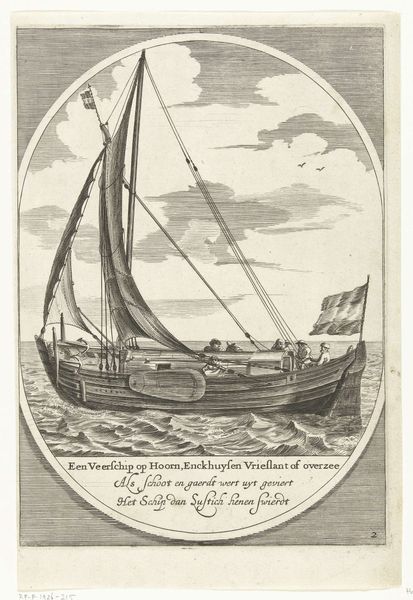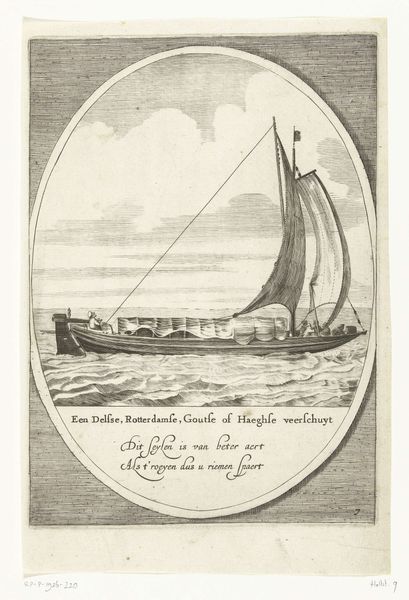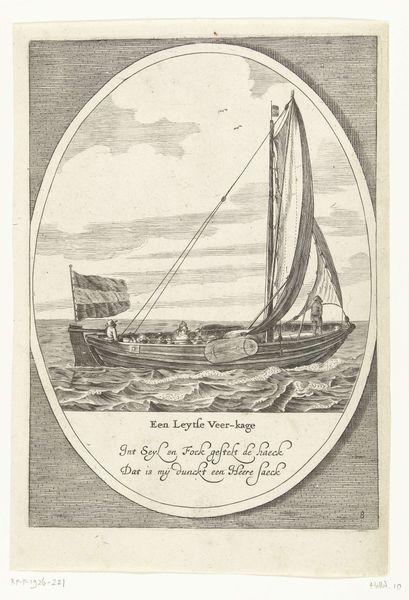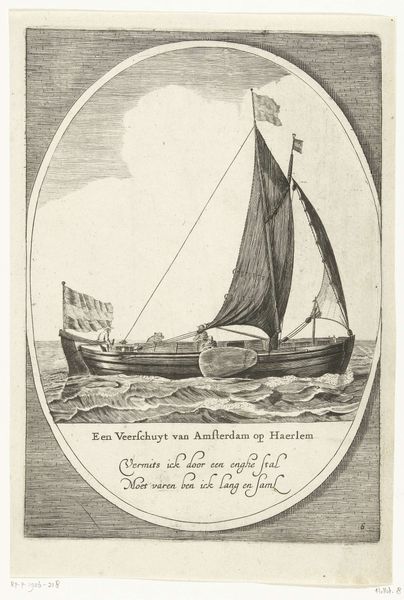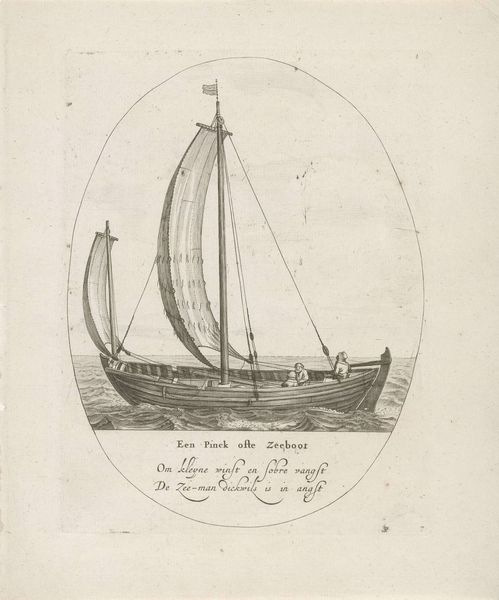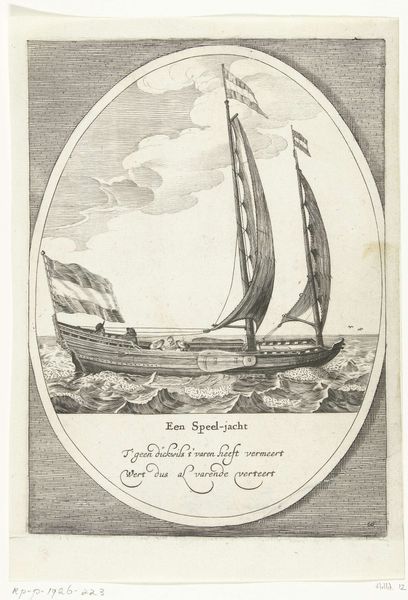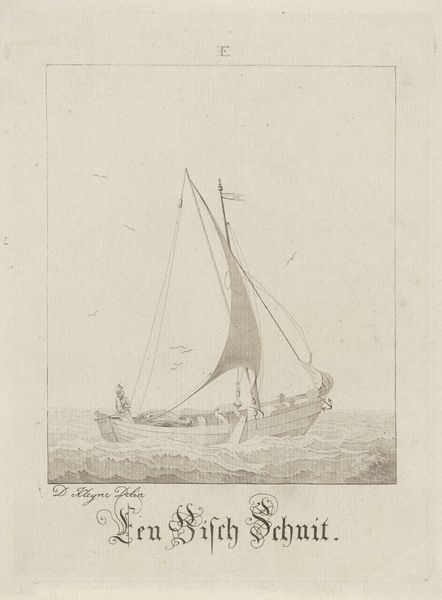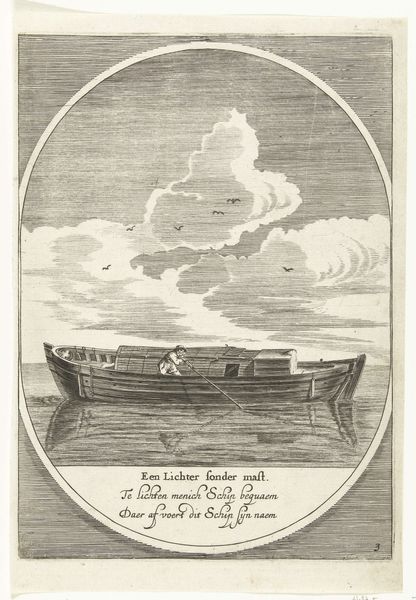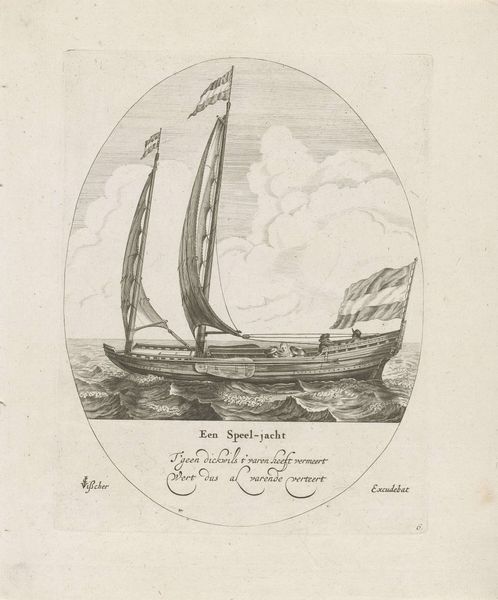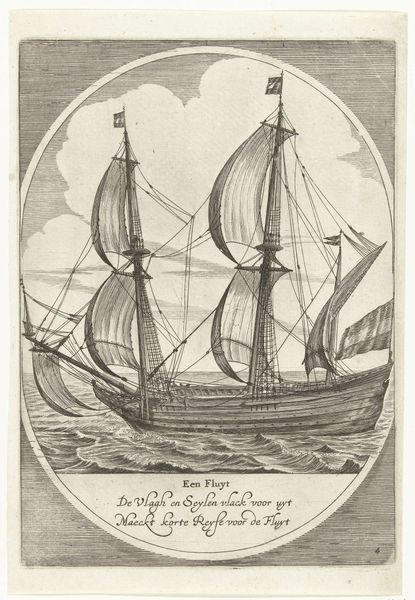
print, engraving
#
dutch-golden-age
# print
#
landscape
#
line
#
genre-painting
#
engraving
Dimensions: height 226 mm, width 162 mm
Copyright: Rijks Museum: Open Domain
Curator: This engraving, “Een Buiksloterveer of steigerschuit” created in 1642 by Dirk Eversen Lons, offers us a fascinating glimpse into 17th-century Dutch maritime life. The work, rendered in delicate lines, presents a vessel amidst choppy waters, framed by an oval border. Editor: My first impression is one of contained restlessness. The oval confines the vastness of the sea, yet the small boat perseveres against the waves. It feels very human, the way we try to navigate the overwhelming forces around us. Curator: Precisely. It's important to recognize the cultural context: The Dutch Golden Age was flourishing through maritime trade. Genre scenes such as this are interesting because they demonstrate how interconnected the lives of everyday citizens were with naval commerce. Editor: The figures on the boat look rather stoic, almost resigned to their journey. In what way did Dutch art contribute to maritime power narratives in the Netherlands? How was Dutch national identity at the time intertwined with maritime expansion? Curator: Seventeenth century engravings like these functioned almost as prototypes of propaganda, cementing ideas around commerce and power and the role the Netherlands occupied on the world stage. Dissemination of these prints encouraged a popular interest in maritime matters but it was only part of a broader project. Images like this, circulated among the merchant classes, instilled and fostered a sense of pride, not only for economic capital, but social capital. Editor: The detail is astonishing for such a small piece. Every wave is given texture and weight, creating a dynamic sense of movement. Are the people aboard heading home, or are they merchants seeking opportunity further away? How are gender and race situated in maritime history? The boat holds more than the promise of trade routes – but routes that bring cultural disruption. Curator: You bring up some compelling questions, and ones that prompt much contemporary scholarship in this area. Editor: This piece invites contemplation of our relationship to the sea—its power, its perils, and the persistent human desire to navigate its uncertainties. Curator: Agreed, seeing the waters, one almost smells salt air and wood tar.
Comments
No comments
Be the first to comment and join the conversation on the ultimate creative platform.
